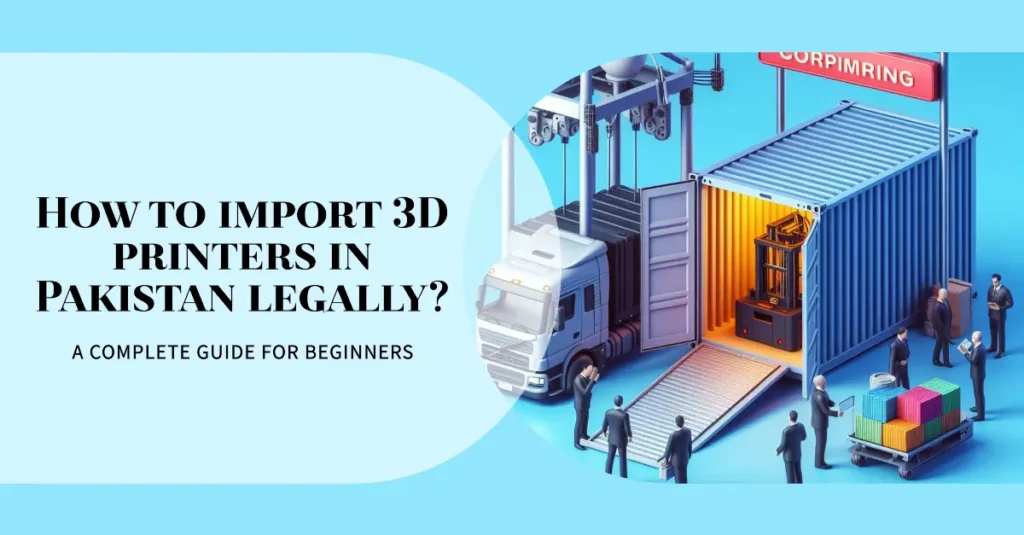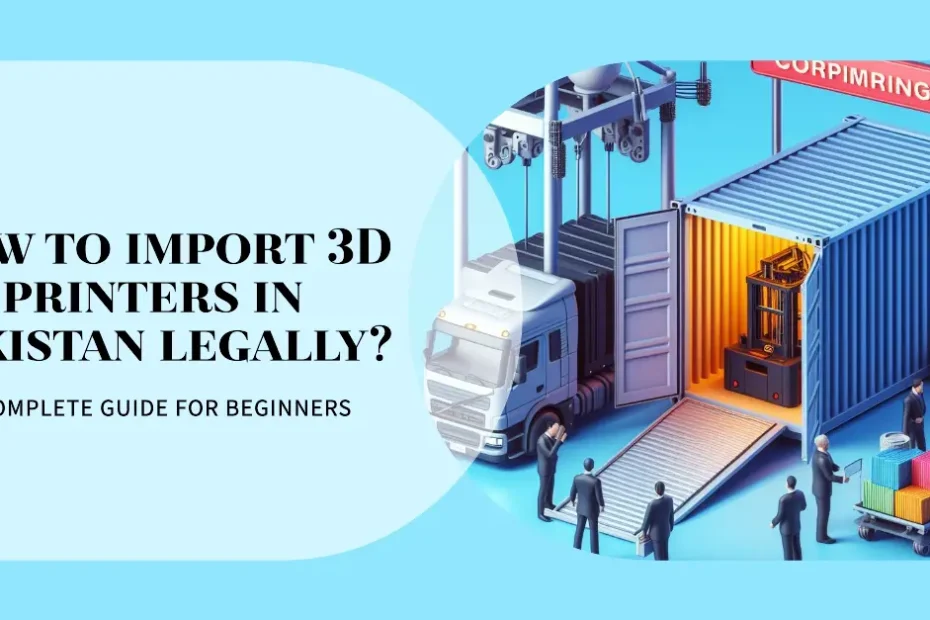In recent years, the demand for 3D printers in Pakistan has skyrocketed, driven by industries ranging from manufacturing to education. These innovative machines offer the ability to turn digital designs into physical objects, revolutionizing how products are made and prototypes are developed. However, importing 3D printers into Pakistan involves navigating a complex web of legal requirements and regulations. This comprehensive guide aims to simplify the process, ensuring that enthusiasts and professionals alike can legally import 3D printers into the country.

Table of Contents
Understanding Import Regulations
The first step in legally importing 3D printers into Pakistan is to familiarize yourself with the country’s import regulations. The Pakistan Customs Tariff is an essential resource, detailing the duties and taxes applicable to various goods, including 3D printers. It’s crucial to note that 3D printers fall under a specific HS code, which determines the rate of duty and taxes imposed.
Acquiring an NTN and WeBOC Registration
Before engaging in any import activities, individuals or businesses must acquire a National Tax Number (NTN) from the Federal Board of Revenue (FBR). The NTN serves as a tax identification number, crucial for all financial transactions within Pakistan. Following this, importers must register with the Web-Based One Customs (WeBOC) system, the electronic portal for Pakistan Customs. This registration allows importers to file goods declarations and access customs-related services online, streamlining the import process.
Securing an Import License
Depending on the nature and scale of your operations, you may need an import license to bring 3D printers into Pakistan. The Ministry of Commerce and Trade issues these licenses, which are typically required for commercial importers. To apply, you’ll need to submit your business details, NTN, and other relevant documents. It’s advisable to consult with a trade lawyer or a customs broker to navigate this process smoothly.
Complying with Regulatory Authorities
Certain types of 3D printers, especially those with advanced capabilities, might be subject to additional scrutiny by regulatory authorities. For instance, printers capable of producing items that could have dual-use (civilian and military) applications might require clearance from the Strategic Export Control Division (SECDIV) of the Ministry of Foreign Affairs. Ensuring compliance with these regulations is paramount to avoid legal complications.
Shipping and Customs Clearance
When shipping 3D printers to Pakistan, it’s essential to work with a reputable freight forwarder who has experience with Pakistani customs. The shipping documents should include an invoice, packing list, bill of lading, and a certificate of origin. Upon arrival, the goods must go through customs clearance, where the WeBOC system plays a crucial role. The customs duties and taxes calculated based on the HS code must be paid before the goods can be released.
Installation and After-Sales Support
Importing a 3D printer is just the beginning. Ensuring that the printer is correctly installed and operational is crucial for its effective use. Importers should verify if the manufacturer or supplier offers after-sales support and maintenance services in Pakistan. It’s also wise to import spare parts alongside the printer to minimize downtime in case of repairs. If you are looking for the best quality local and imported 3D printers then you must visit 3DISM.
FAQs about the import of 3D printers in Pakistan
What is the HS code for 3D printers in Pakistan?
The HS code for 3D printers can vary depending on their specific features and capabilities. It’s recommended to consult the Pakistan Customs Tariff or a customs broker for the exact HS code.
Can individuals import 3D printers for personal use?
Yes, individuals can import 3D printers for personal use, but they must still comply with the import regulations and may have to pay the applicable duties and taxes.
Are there any restrictions on the types of 3D printers that can be imported into Pakistan?
While there are no broad restrictions on the types of 3D printers, those with capabilities that could be used for dual purposes (civilian and military) might require additional clearances.
How can I reduce the customs duties on importing a 3D printer?
Customs duties are determined based on the HS code and cannot be reduced unless the printer falls under a specific exemption or concessionary regime. Consulting with a customs broker might help identify any applicable exemptions.
Is it necessary to have a local partner in Pakistan to import 3D printers?
Having a local partner is not mandatory but can be beneficial, especially in navigating the import process and ensuring compliance with local regulations.
By carefully following these steps and ensuring compliance with Pakistan’s legal and regulatory framework, businesses and individuals can successfully import 3D printers. Staying informed about any changes in import regulations and working with experienced customs brokers or legal advisors can help smooth the process, allowing you to focus on the innovative possibilities that 3D printing brings.
